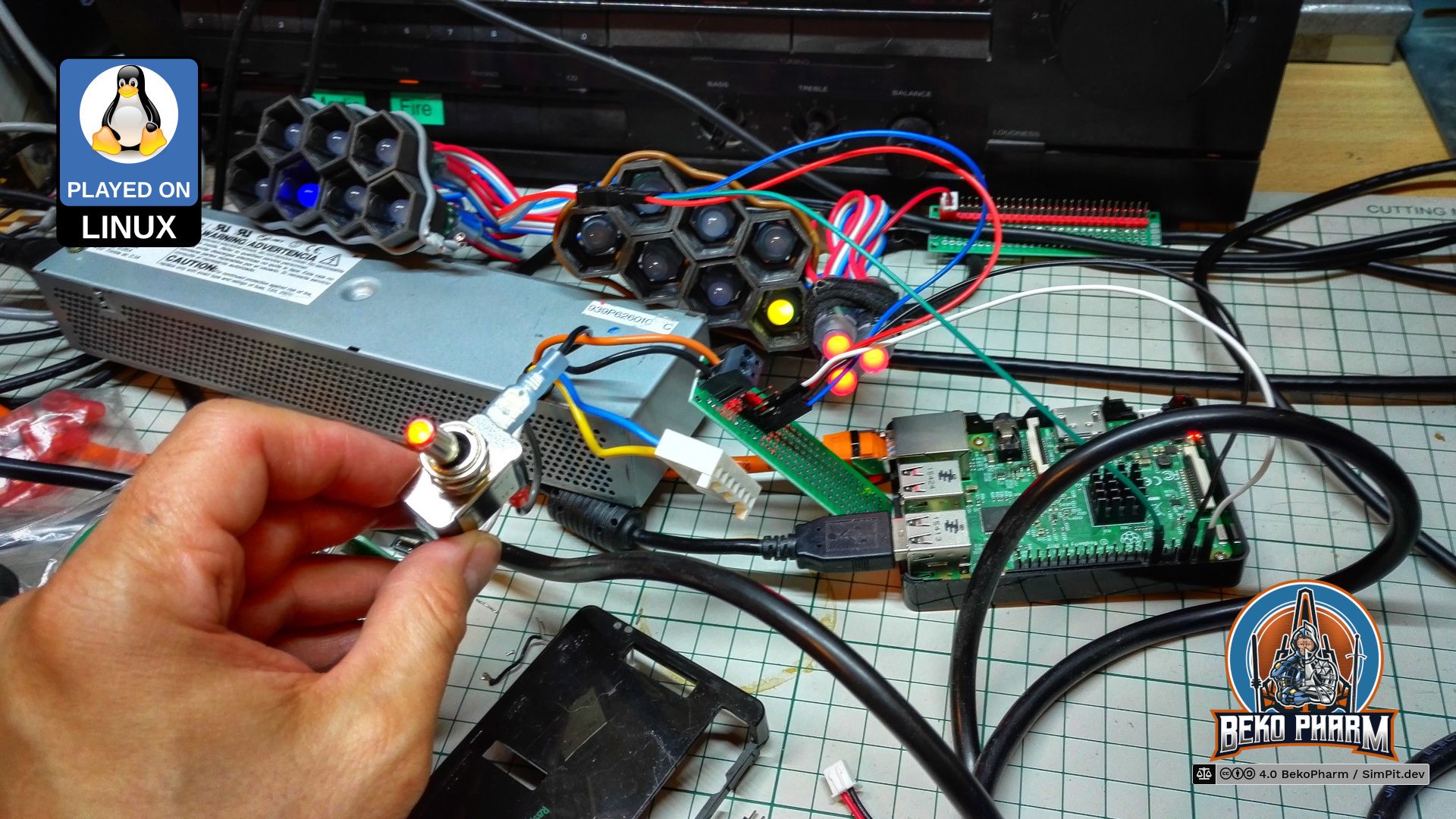Blinken lights
1.0 Raspberry Pi Node-RED 4.0
This content was created for an older version and is outdated. Check version 2 for an up-to-date description!
This page describes actions that may result in a fire hazard or an electric shock. Repeat at your own risk.
Every cockpit needs blinken lights. My status indicators were realized with a Neopixel. That’s a string of RGB LED wich indidivually addressable LED. This way only a single PIN is needed to configure all lights. It has to be a pin that can do pulse-width modulation (PWM) though so choices are limited.
There are various protocols for this. Mine consists of WS2811 modules where plenty of examples exist on the internet.
A dedicated connection is used for power and in theory all LED can be driven from that but in reality we have to keep ampere in mind so things don’t go up in flames. The string is also dead should one module break for good. Not really suited for a real *craft but hey, this is a toy and each string comes with plenty of leftoversreplacement parts 🙃
I went for this specific Neopixel because it came with the “classic” LED design. The diffusor is 12mm in diameter and the LED did fit almost perfect in their hexagonal housings. The housings are not 3D printed. That’s basically a plastic cap for protecting the bolts of the rim of a car wheel. I just cut off the cap and stuffed the LED inside. Didn’t even glue them together. A wire fixed all in place which allowed me to move the segments around. They were never attached to the panel version 1.
On this picture you can see that I used a cheap external power supply (PSU) to drive both, the Neopixel and the Raspberry Pi. The specific model is a VOLTEK SPEC7188B with a 5V rail rated for 3.7A and a 12V rail rated for 600mA. More than enough juice to drive all LED in my setup. A tricke line is pulled to GND to start it - the perfect place for a chunky switch for a satisfying sound. Bonus with a fancy LED.
The LEDs are controlled by Node-RED that does all the plumbing in the end.
Links
- Node-RED, Low-code programming for event-driven applications
